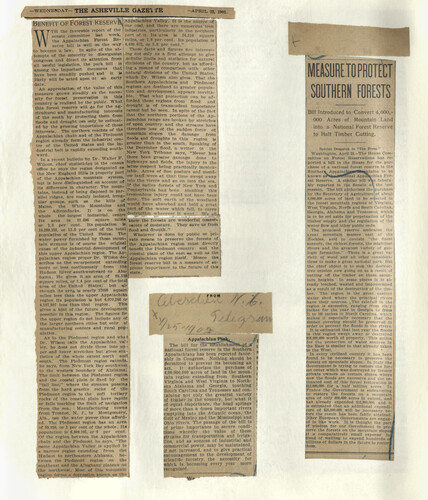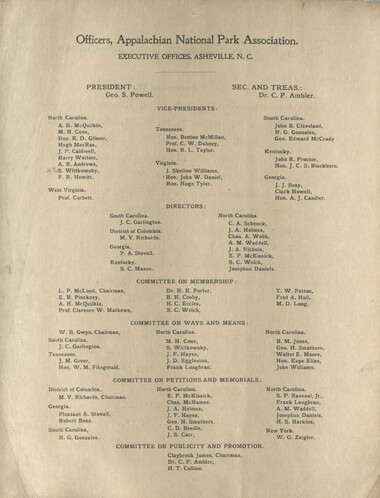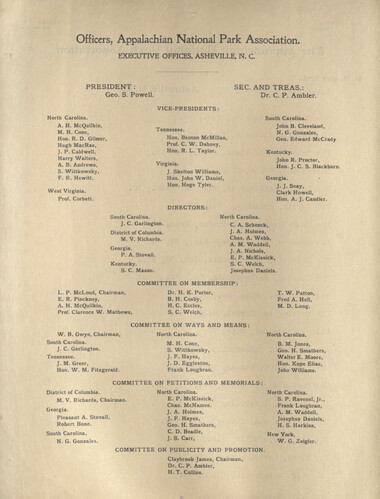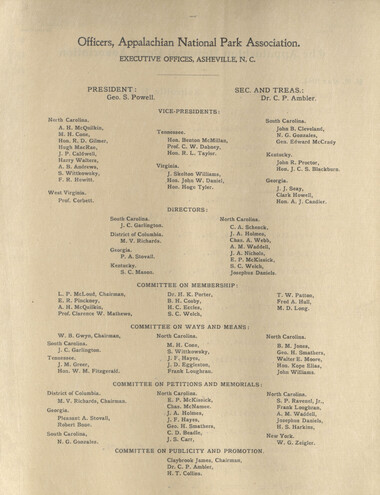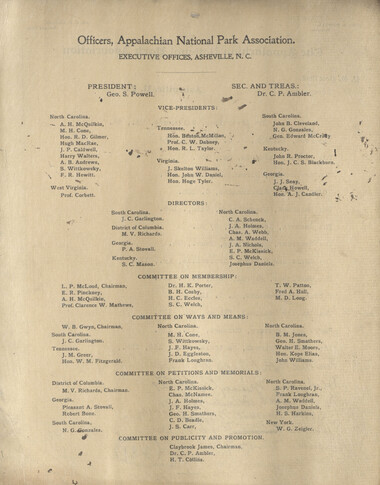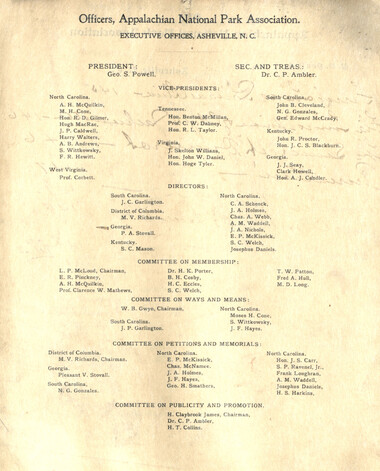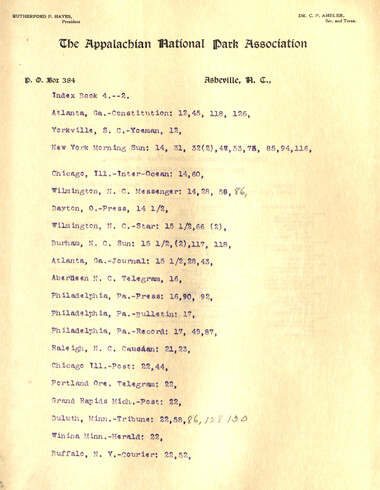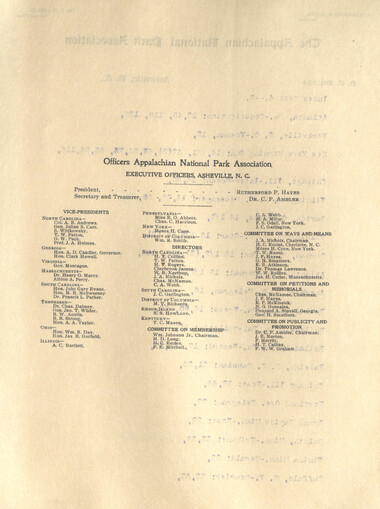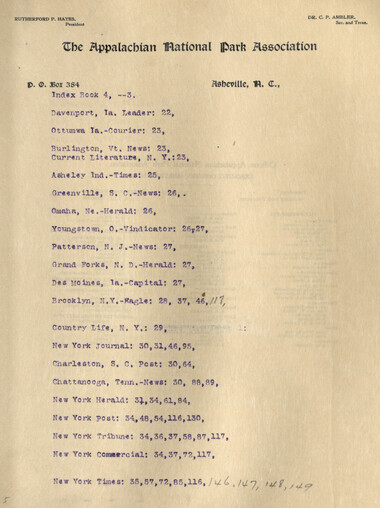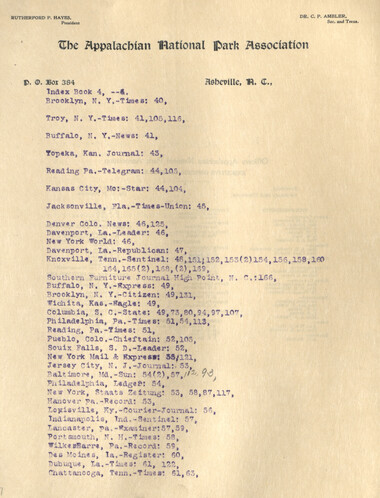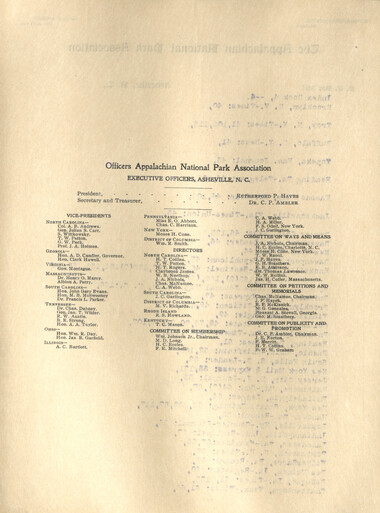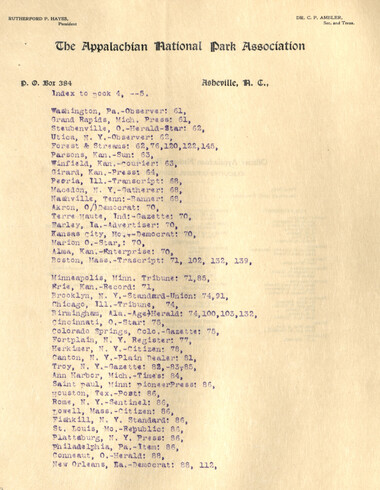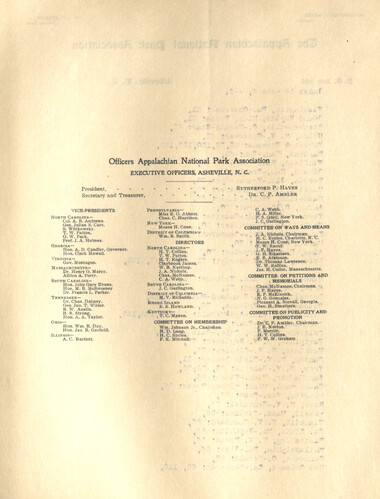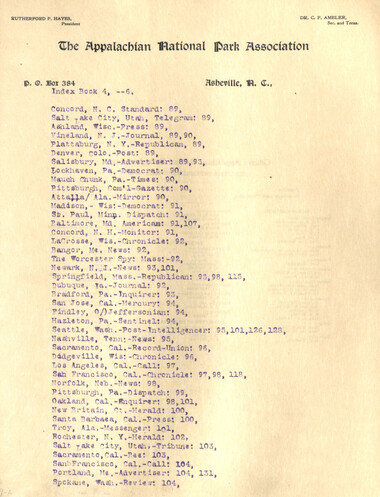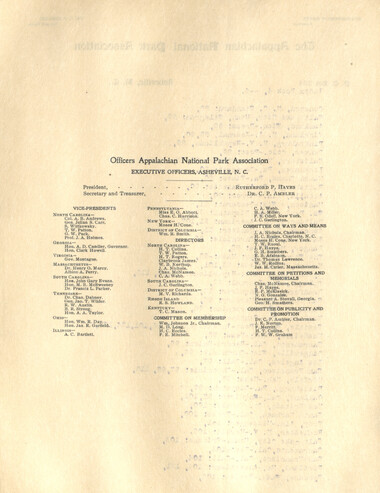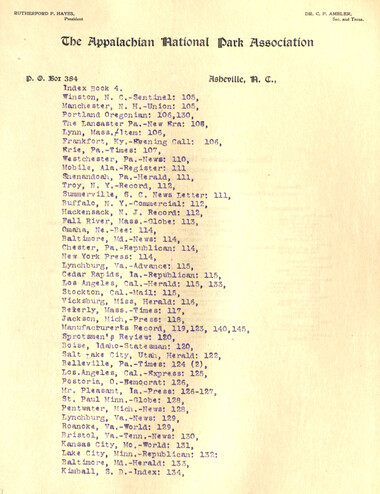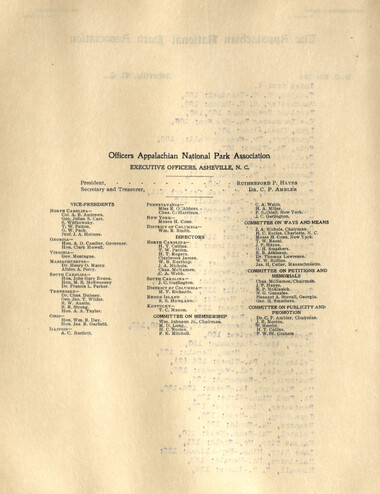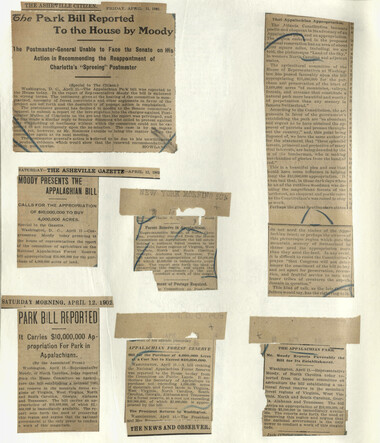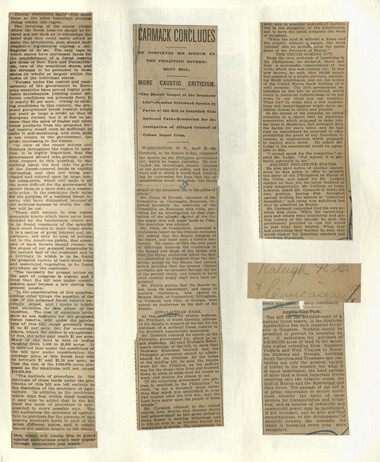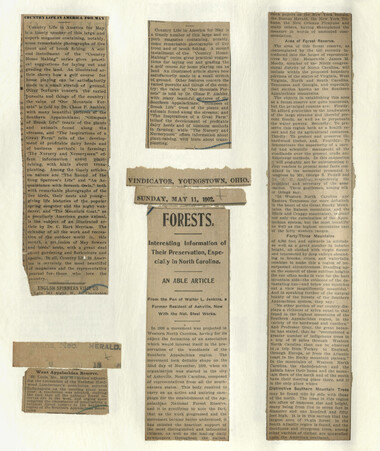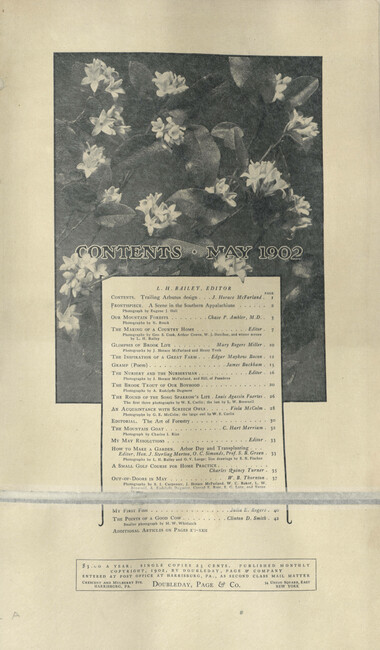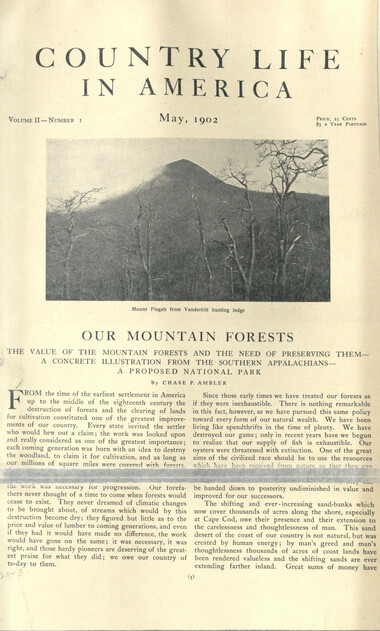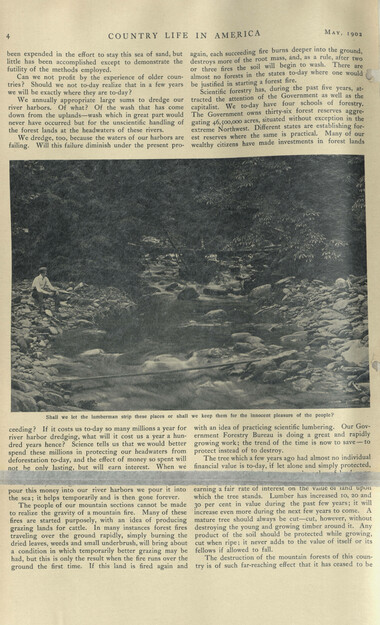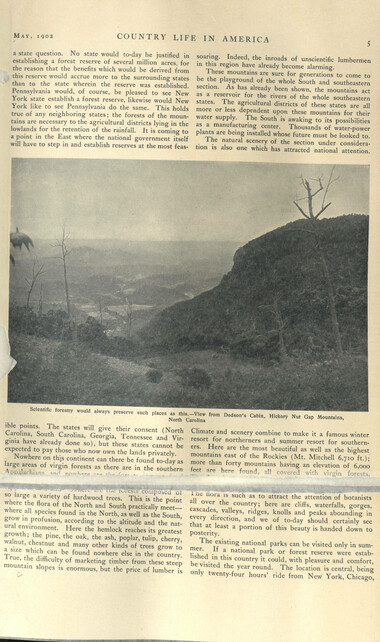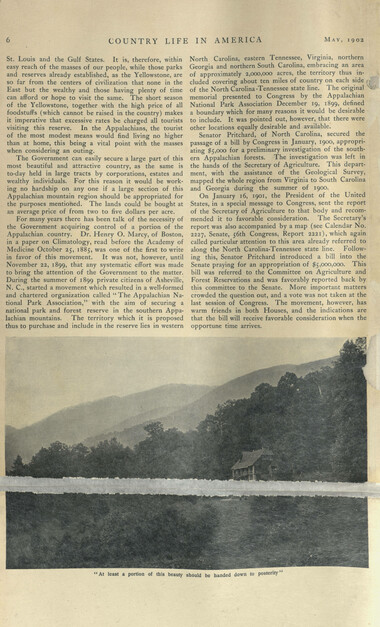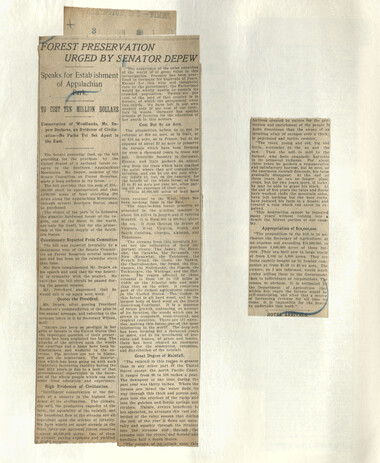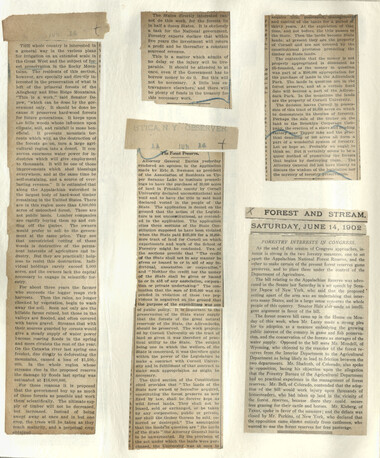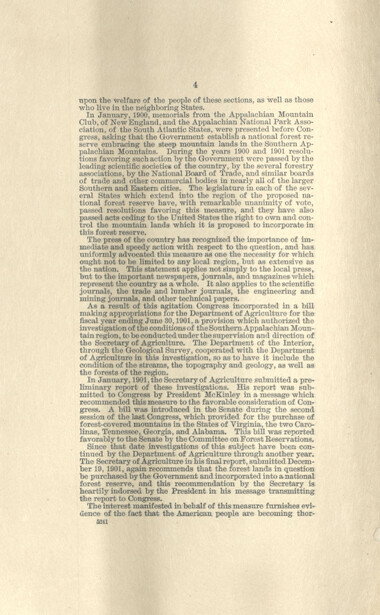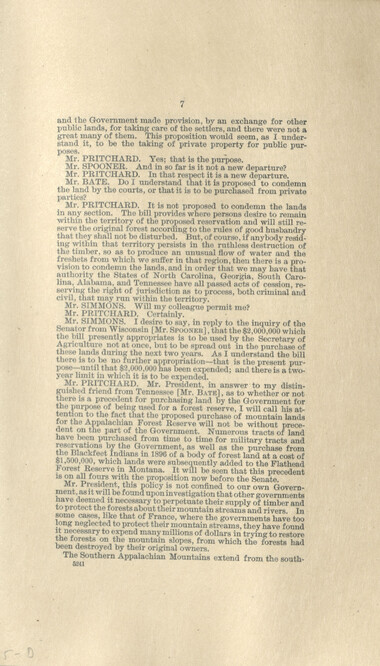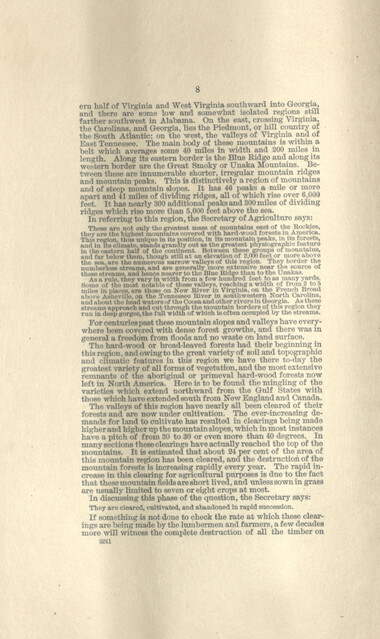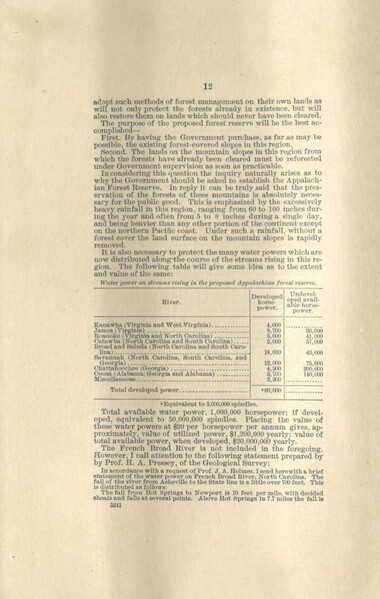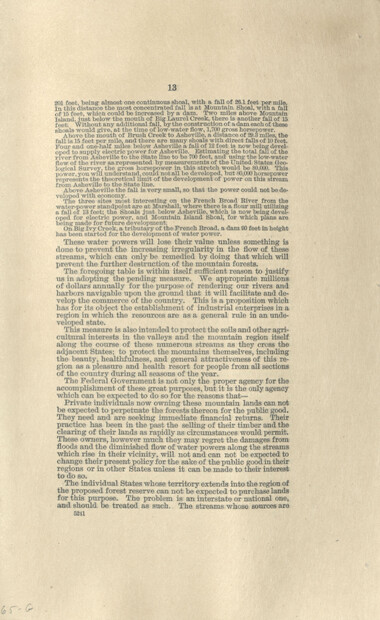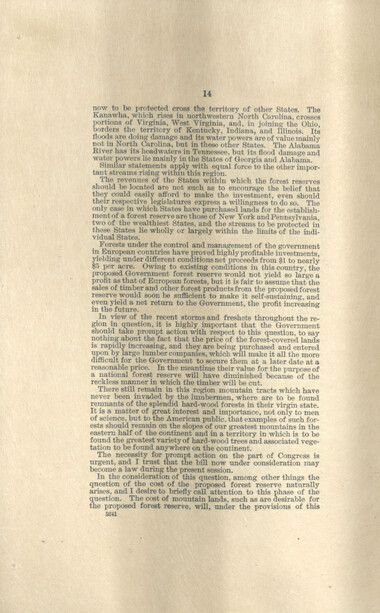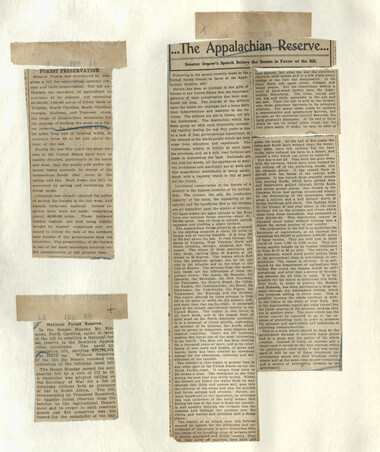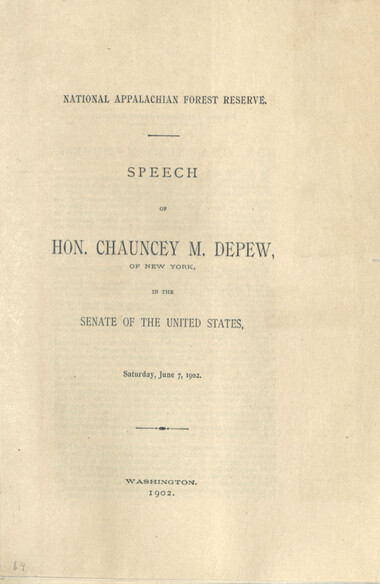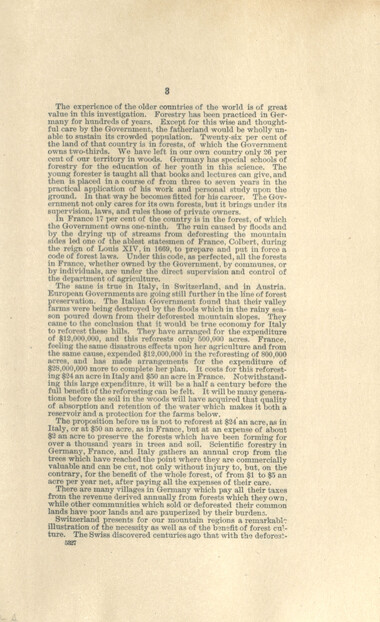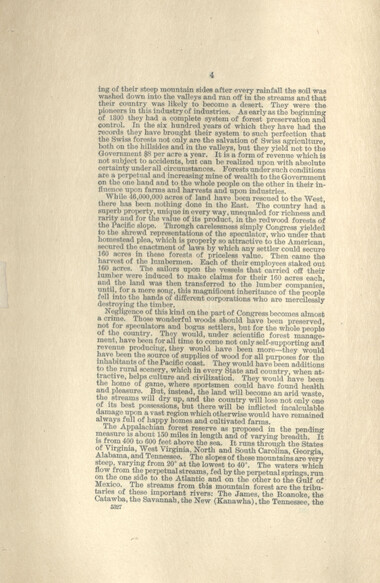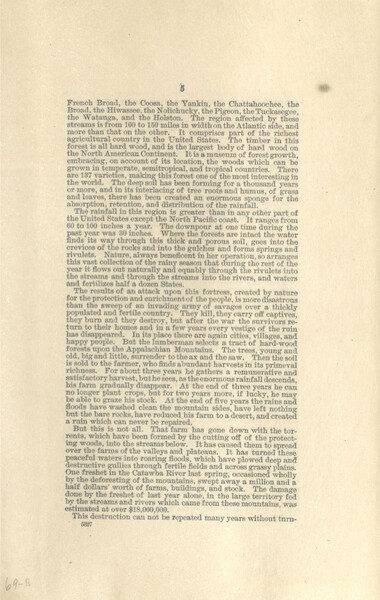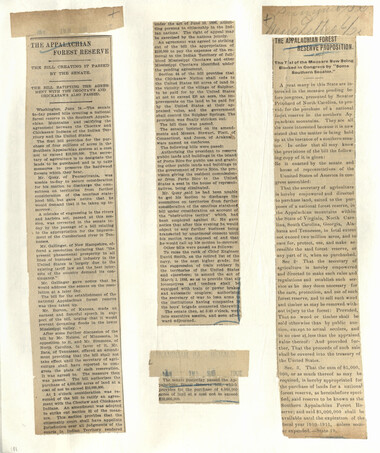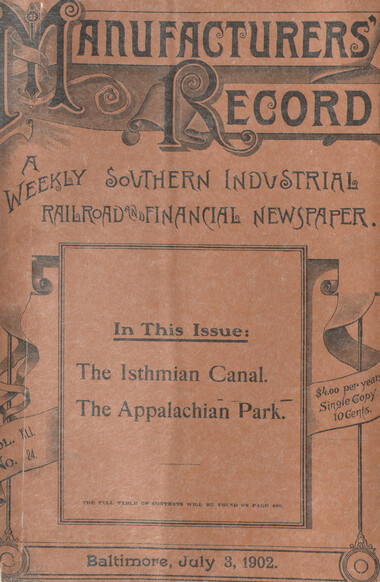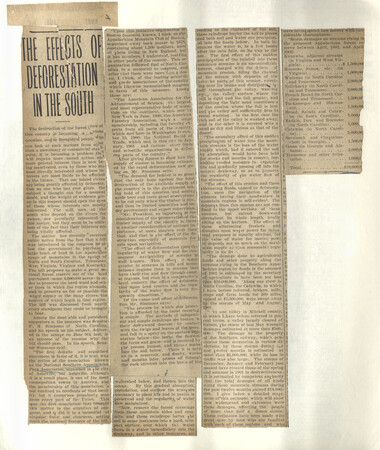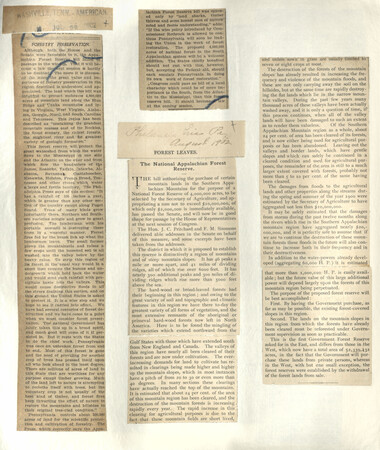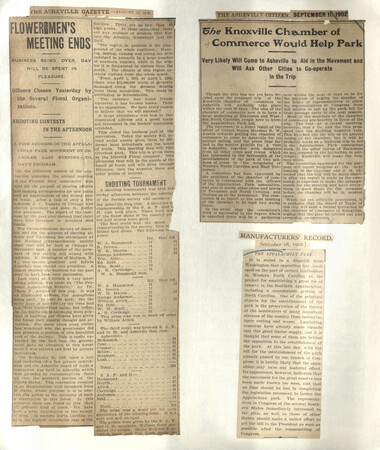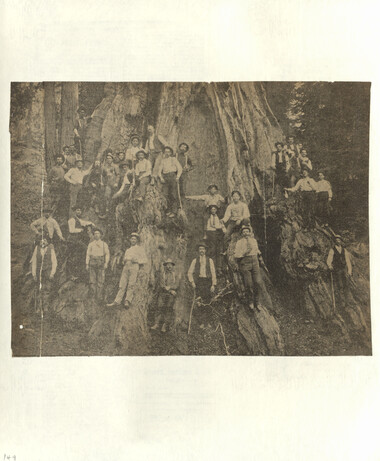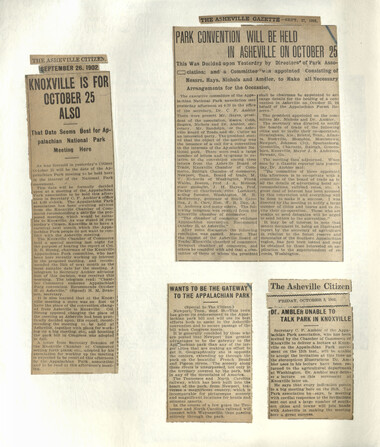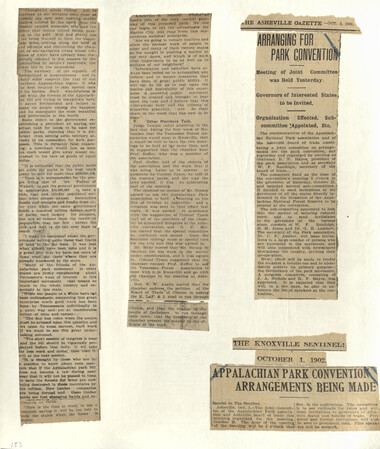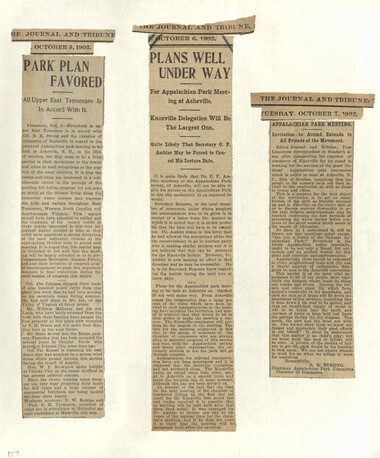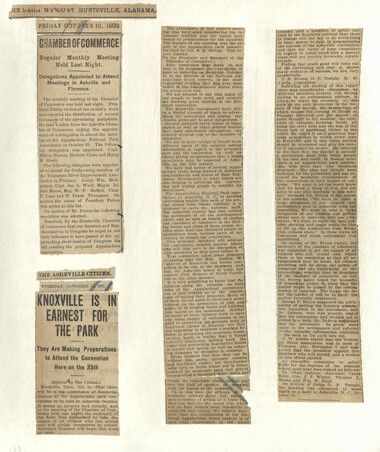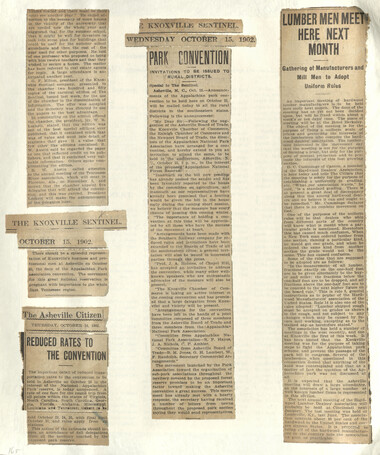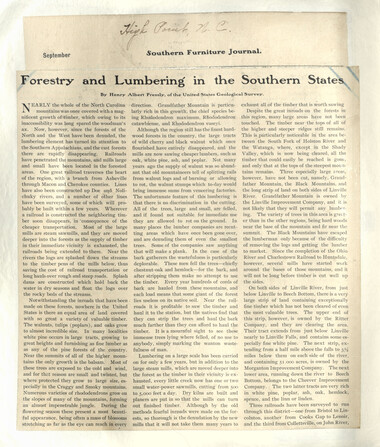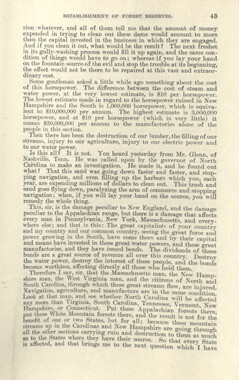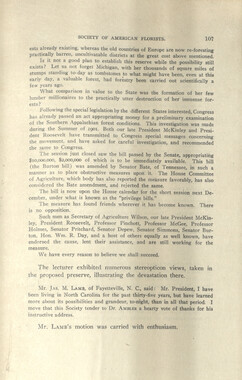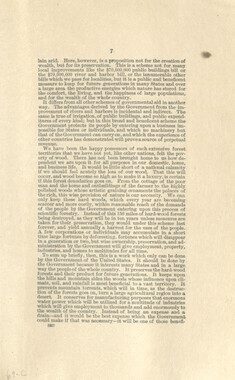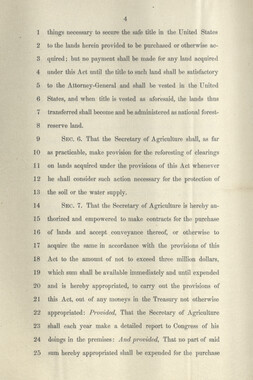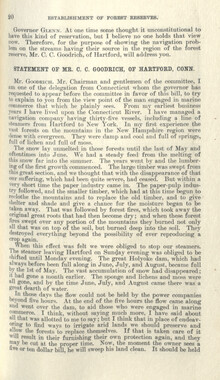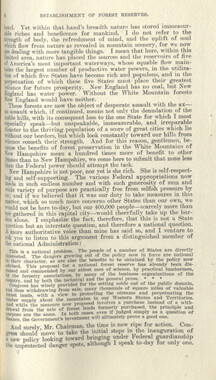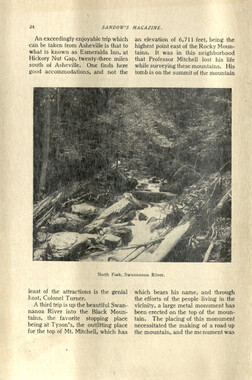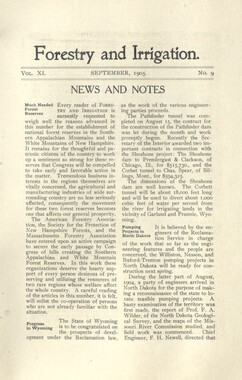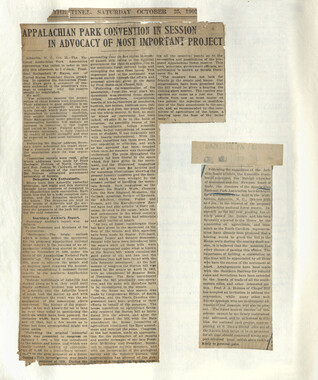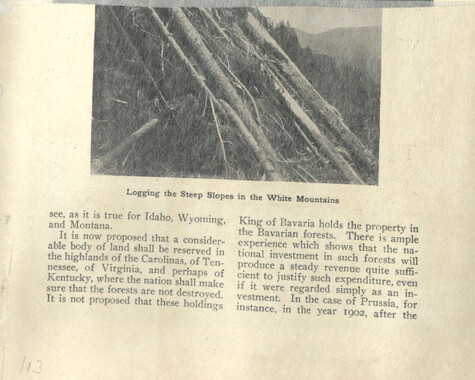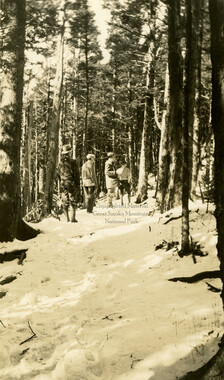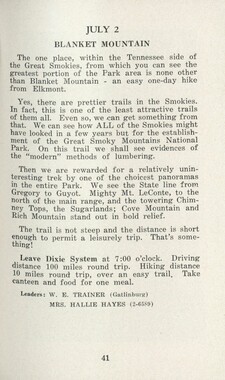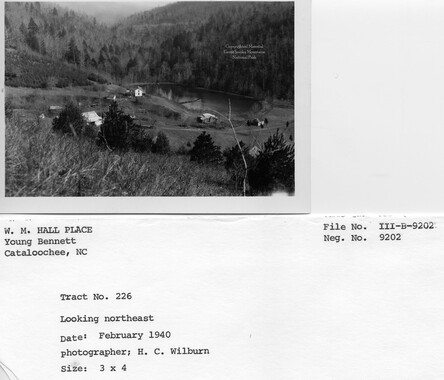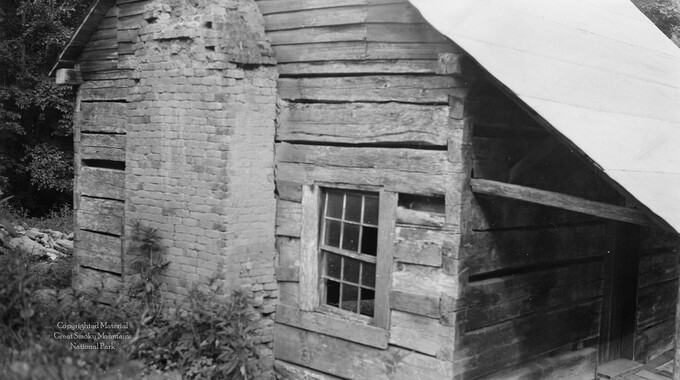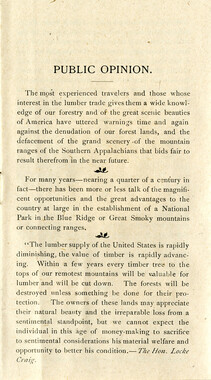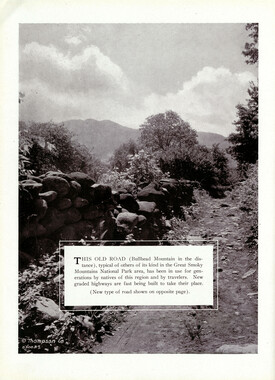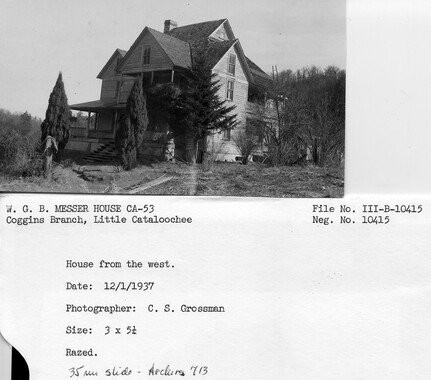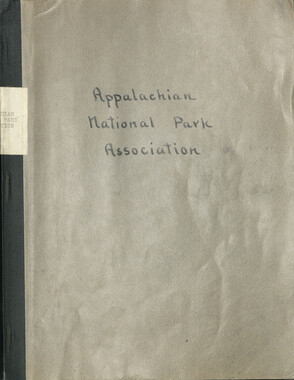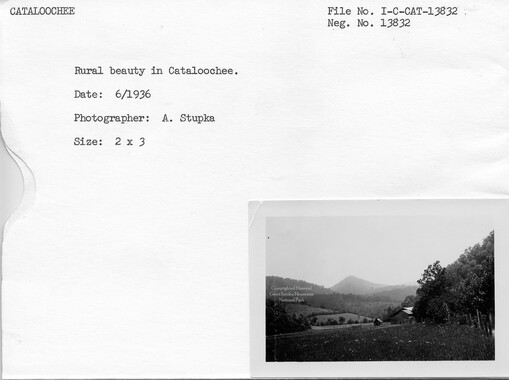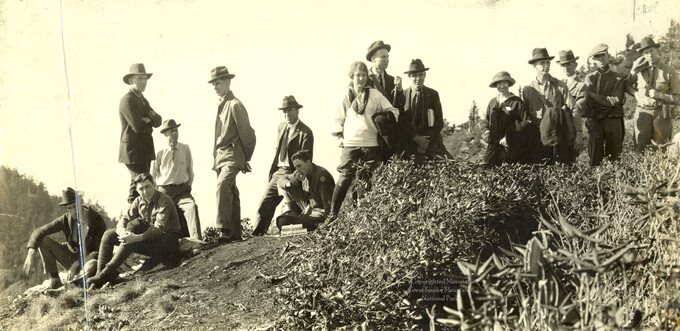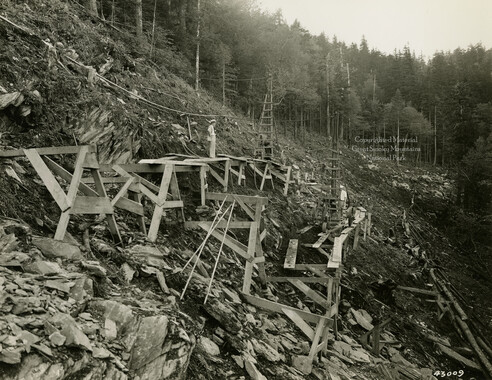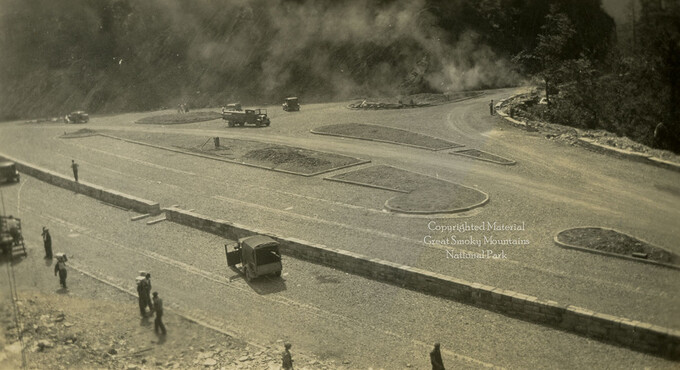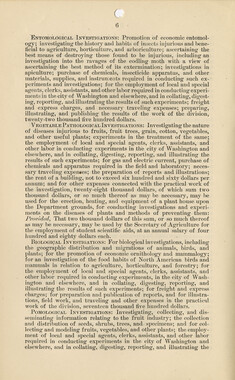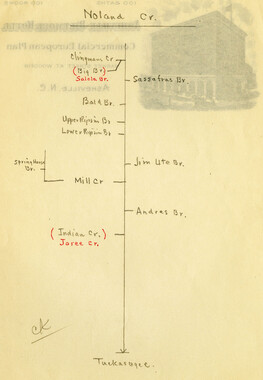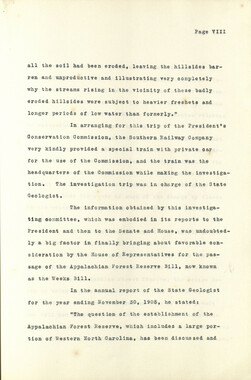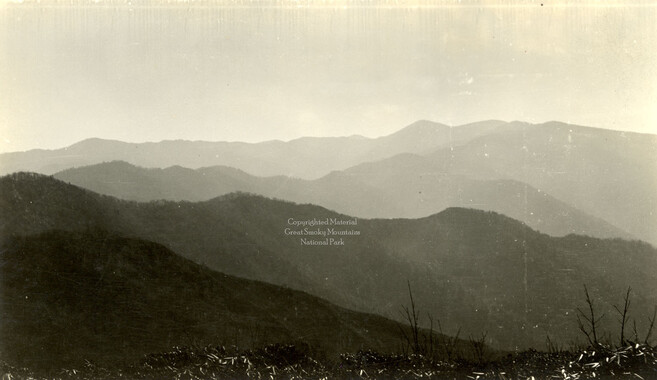Western Carolina University (20)
View all
- Canton Champion Fibre Company (2308)
- Cherokee Traditions (292)
- Civil War in Southern Appalachia (165)
- Craft Revival (1942)
- Great Smoky Mountains - A Park for America (2766)
- Highlights from Western Carolina University (430)
- Horace Kephart (941)
- Journeys Through Jackson (154)
- LGBTQIA+ Archive of Jackson County (85)
- Oral Histories of Western North Carolina (314)
- Picturing Appalachia (6772)
- Stories of Mountain Folk (413)
- Travel Western North Carolina (160)
- Western Carolina University Fine Art Museum Vitreograph Collection (129)
- Western Carolina University Herbarium (92)
- Western Carolina University: Making Memories (708)
- Western Carolina University Publications (2283)
- Western Carolina University Restricted Electronic Theses and Dissertations (146)
- Western North Carolina Regional Maps (71)
- World War II in Southern Appalachia (131)
University of North Carolina Asheville (6)
View all
- Allanstand Cottage Industries (62)
- Appalachian National Park Association (53)
- Bennett, Kelly, 1890-1974 (1388)
- Berry, Walter (76)
- Brasstown Carvers (40)
- Carver, George Washington, 1864?-1943 (26)
- Cathey, Joseph, 1803-1874 (1)
- Champion Fibre Company (233)
- Champion Paper and Fibre Company (297)
- Cherokee Indian Fair Association (16)
- Cherokee Language Program (22)
- Crowe, Amanda (40)
- Edmonston, Thomas Benton, 1842-1907 (7)
- Ensley, A. L. (Abraham Lincoln), 1865-1948 (275)
- Fromer, Irving Rhodes, 1913-1994 (70)
- George Butz (BFS 1907) (46)
- Goodrich, Frances Louisa (120)
- Grant, George Alexander, 1891-1964 (96)
- Heard, Marian Gladys (60)
- Kephart, Calvin, 1883-1969 (15)
- Kephart, Horace, 1862-1931 (313)
- Kephart, Laura, 1862-1954 (39)
- Laney, Gideon Thomas, 1889-1976 (439)
- Masa, George, 1881-1933 (61)
- McElhinney, William Julian, 1896-1953 (44)
- Niggli, Josephina, 1910-1983 (10)
- North Carolina Park Commission (105)
- Osborne, Kezia Stradley (9)
- Owens, Samuel Robert, 1918-1995 (11)
- Penland Weavers and Potters (36)
- Roberts, Vivienne (15)
- Roth, Albert, 1890-1974 (142)
- Schenck, Carl Alwin, 1868-1955 (1)
- Sherrill's Photography Studio (2565)
- Southern Highland Handicraft Guild (127)
- Southern Highlanders, Inc. (71)
- Stalcup, Jesse Bryson (46)
- Stearns, I. K. (213)
- Thompson, James Edward, 1880-1976 (226)
- United States. Indian Arts and Crafts Board (130)
- USFS (683)
- Vance, Zebulon Baird, 1830-1894 (1)
- Weaver, Zebulon, 1872-1948 (58)
- Western Carolina College (230)
- Western Carolina Teachers College (282)
- Western Carolina University (1794)
- Western Carolina University. Mountain Heritage Center (18)
- Whitman, Walt, 1819-1892 (10)
- Wilburn, Hiram Coleman, 1880-1967 (73)
- Williams, Isadora (3)
- Cain, Doreyl Ammons (0)
- Crittenden, Lorraine (0)
- Rhodes, Judy (0)
- Smith, Edward Clark (0)
- Appalachian Region, Southern (2569)
- Asheville (N.C.) (1923)
- Avery County (N.C.) (26)
- Blount County (Tenn.) (161)
- Buncombe County (N.C.) (1672)
- Cherokee County (N.C.) (283)
- Clay County (N.C.) (555)
- Graham County (N.C.) (233)
- Great Smoky Mountains National Park (N.C. and Tenn.) (519)
- Haywood County (N.C.) (3524)
- Henderson County (N.C.) (70)
- Jackson County (N.C.) (4694)
- Knox County (Tenn.) (25)
- Knoxville (Tenn.) (12)
- Lake Santeetlah (N.C.) (10)
- Macon County (N.C.) (420)
- Madison County (N.C.) (212)
- McDowell County (N.C.) (39)
- Mitchell County (N.C.) (132)
- Polk County (N.C.) (35)
- Qualla Boundary (981)
- Rutherford County (N.C.) (76)
- Swain County (N.C.) (2115)
- Transylvania County (N.C.) (270)
- Watauga County (N.C.) (12)
- Waynesville (N.C.) (84)
- Yancey County (N.C.) (72)
- Aerial Photographs (3)
- Aerial Views (60)
- Albums (books) (4)
- Articles (1)
- Artifacts (object Genre) (228)
- Bibliographies (1)
- Biography (general Genre) (2)
- Cards (information Artifacts) (38)
- Clippings (information Artifacts) (191)
- Crafts (art Genres) (622)
- Depictions (visual Works) (21)
- Design Drawings (1)
- Drawings (visual Works) (184)
- Envelopes (73)
- Facsimiles (reproductions) (1)
- Fiction (general Genre) (4)
- Financial Records (12)
- Fliers (printed Matter) (67)
- Glass Plate Negatives (381)
- Guidebooks (2)
- Internegatives (10)
- Interviews (815)
- Land Surveys (102)
- Letters (correspondence) (1013)
- Manuscripts (documents) (618)
- Maps (documents) (177)
- Memorandums (25)
- Minutes (administrative Records) (59)
- Negatives (photographs) (5835)
- Newsletters (1285)
- Newspapers (2)
- Occupation Currency (1)
- Paintings (visual Works) (1)
- Pen And Ink Drawings (1)
- Periodicals (193)
- Personal Narratives (10)
- Photographs (12976)
- Plans (maps) (1)
- Poetry (6)
- Portraits (4533)
- Postcards (329)
- Programs (documents) (151)
- Publications (documents) (2236)
- Questionnaires (65)
- Scrapbooks (282)
- Sheet Music (2)
- Slides (photographs) (402)
- Songs (musical Compositions) (2)
- Sound Recordings (796)
- Specimens (92)
- Speeches (documents) (15)
- Tintypes (photographs) (8)
- Transcripts (322)
- Video Recordings (physical Artifacts) (23)
- Vitreographs (129)
- Text Messages (0)
- A.L. Ensley Collection (275)
- Appalachian Industrial School Records (7)
- Appalachian National Park Association Records (336)
- Axley-Meroney Collection (2)
- Bayard Wootten Photograph Collection (20)
- Bethel Rural Community Organization Collection (7)
- Blumer Collection (5)
- C.W. Slagle Collection (20)
- Canton Area Historical Museum (2110)
- Carlos C. Campbell Collection (282)
- Cataloochee History Project (64)
- Cherokee Studies Collection (4)
- Daisy Dame Photograph Album (5)
- Daniel Boone VI Collection (1)
- Doris Ulmann Photograph Collection (112)
- Elizabeth H. Lasley Collection (1)
- Elizabeth Woolworth Szold Fleharty Collection (4)
- Frank Fry Collection (95)
- George Masa Collection (173)
- Gideon Laney Collection (452)
- Hazel Scarborough Collection (2)
- Hiram C. Wilburn Papers (28)
- Historic Photographs Collection (236)
- Horace Kephart Collection (861)
- Humbard Collection (33)
- Hunter and Weaver Families Collection (1)
- I. D. Blumenthal Collection (4)
- Isadora Williams Collection (4)
- Jesse Bryson Stalcup Collection (47)
- Jim Thompson Collection (224)
- John B. Battle Collection (7)
- John C. Campbell Folk School Records (80)
- John Parris Collection (6)
- Judaculla Rock project (2)
- Kelly Bennett Collection (1407)
- Love Family Papers (11)
- Major Wiley Parris Civil War Letters (3)
- Map Collection (12)
- McFee-Misemer Civil War Letters (34)
- Mountain Heritage Center Collection (4)
- Norburn - Robertson - Thomson Families Collection (44)
- Pauline Hood Collection (7)
- Pre-Guild Collection (2)
- Qualla Arts and Crafts Mutual Collection (12)
- R.A. Romanes Collection (681)
- Rosser H. Taylor Collection (1)
- Samuel Robert Owens Collection (94)
- Sara Madison Collection (144)
- Sherrill Studio Photo Collection (2558)
- Smoky Mountains Hiking Club Collection (616)
- Stories of Mountain Folk - Radio Programs (374)
- The Reporter, Western Carolina University (510)
- Venoy and Elizabeth Reed Collection (16)
- WCU Gender and Sexuality Oral History Project (32)
- WCU Mountain Heritage Center Oral Histories (25)
- WCU Oral History Collection - Mountain People, Mountain Lives (71)
- WCU Students Newspapers Collection (1744)
- Western North Carolina Tomorrow Black Oral History Project (69)
- William Williams Stringfield Collection (2)
- Zebulon Weaver Collection (109)
- African Americans (390)
- Appalachian Trail (35)
- Artisans (521)
- Cherokee art (84)
- Cherokee artists -- North Carolina (10)
- Cherokee language (21)
- Cherokee pottery (101)
- Cherokee women (208)
- Church buildings (170)
- Civilian Conservation Corps (U.S.) (110)
- College student newspapers and periodicals (1830)
- Dams (107)
- Dance (1023)
- Education (222)
- Floods (61)
- Folk music (1015)
- Forced removal, 1813-1903 (2)
- Forest conservation (220)
- Forests and forestry (1184)
- Gender nonconformity (4)
- Great Smoky Mountains National Park (N.C. and Tenn.) (181)
- Hunting (38)
- Landscape photography (25)
- Logging (118)
- Maps (83)
- Mines and mineral resources (8)
- North Carolina -- Maps (18)
- Paper industry (38)
- Postcards (255)
- Pottery (135)
- Railroad trains (71)
- Rural electrification -- North Carolina, Western (3)
- School integration -- Southern States (2)
- Segregation -- North Carolina, Western (5)
- Slavery (5)
- Sports (452)
- Storytelling (244)
- Waterfalls -- Great Smoky Mountains (N.C. and Tenn.) (66)
- Weaving -- Appalachian Region, Southern (280)
- Wood-carving -- Appalachian Region, Southern (328)
- World War, 1939-1945 (173)
Appalachian National Park Association Newspaper Clippings, 1899-1902
Item
Item’s are ‘child’ level descriptions to ‘parent’ objects, (e.g. one page of a whole book).
-
-
-Wednesday- THE ASHEVILLE GAZEVfE —APRIL 23, 1' that it \a early serve bill is 'well on the way to become •a. tew. In spite of tlie attempts of the minority to disorganize congress and direct its attention from all useful legislation, the park bill is among the important measures have been steadily pushed and likely will be 'acted upon at am date. An appreciation of the value of this measure grows steadily as the necessity for forest preservation in this country is realized by the public. What this forest reserve will do for the agricultural and manufacturing Interests of the south by protecting them from floods and drought can only be estimated by the growing importance of these interests. The northern reaches of the Appalachian chain and of the Piedmont region already form 'the industrial center of the United States and the industrial belt is rapidly extending southward . In a recent bulletin 'by Dr. Walter F. Benefit of Forest KESERVBJApi>alac1hlan7f"ey' Tt is the so" uniNcrii <~r i vi^-" lour coal, and there are numerous iron ▼ VTTH the favorable report of the industries, particularly in the northern \l senate committee last week, ' part of it. Its area is 54,519 square V/V the Appalachian Forest Re-I miles, or 1.8 per cent. Its population is » 1 serve bill is 'well on the1 way i 4,499.072. or 5.9 per cent." These facts and figures 'are interesting not only as a first attempt to give definite limits and statistics for natural divisions of the country, but as affording a means of comparison 'with other natural divisions of the United States, ■which Dr. Wilson also gives. That the Southern Appalachians and Piedmont regions are destined to greater population and development appears inevita- ble. That what protection can be afforded these regions from flood and ilrought is of transeedent importance cannot but be seen. In spite of the fact that the northern portions of the Appalachian range are broken 'by stretches of open country and the streams have therefore less of the sudden force ot mountain slopes the damage from floods and droughts in this region is greater than In the south. Speaking of the December flood, a writer in the ,New York Tribune says, "Never has _ Ithere been greater damage done to Wilcox' "chiefStatistician in the census i highways 'and fields, the injury in the office he says the region designated as *«er respect being practically incalcu- the New England Hills is properly part t'able. Acres of fine pasture .and mead- of the Appalachian mountain system, !"w land ™ere at that time swept away but is here distinguished on account of '"*« the rivers and so on into the sea. Its difference in character. The moun- Pf the native forests of New York and tains, instead of being disposed In par- ^ennsylvania had been standing this allel ridges are mainly isolated, lrreg- 'tremendous injury could not have been ular grour^. suc-h J the hills of *».. The soft earth of the woo Maine the White' Mountains and woul<* have absorbed and he] the 'Adirondack. It is on, the P«t of the water which fell, to carry •whole the largest industrial, centre destruction wherever It went. !\ Its area is 82.696 square miles know the forests are wonderful conser. or 2.8 per cent. Its population Is vators of moisture. They save us from 10,260.1:>:!. in- 18.6 per cent of the total} fl0O(i wA ar0uth• population of the United States. The ■water power furnished by these mountain streams is otf oowrse the original en use of the Industrial development ot this upper Appalachian region. The Appalachian region proper Or. Wilson de- sorlbea as tho esearpement extending more ,u !'■:" continuously from the Hudson Hiver southwostward to Ala- bamn. Me givi-e il mi area of 99.581 square miles, <s*3.4 per cent of the total area of the United States; but although its area is nearly 17000 square miles less than the upper Appalachian region its population Is but 6,070,246 <r 4,187.907 less than that region. This gives n. hint of the future development possible in this region. The figures for the upper region do not include any of the larger northern cities but only of manufacturing centers and rural population. As to the Piedmont region and -what Dr. Wilson calls the Appalachian valley, he does not divide these into upper and lower stretches but gives statistics of the whole extent north and south. The Piedmont region extends., lie says, from New York Bay southwest. to the western boundary of Alabama. The limit between the Piedmont region and the coastal plain is fixed by the "fall line," where the streams passing from the hard granite rocks of the Piedmont region to the soft tertiary rocks of the coastal plain have rapids or falls marking the limit of navigation from the sea. Manufacturing towns from Trenton, N. J., to Montgomery, Ala., use the water power thus afforded. The Piedmont region has an area of 89.920, or 3 per cent of the whole. Its population is 6.809.103, or 9 per cent. Of the region- between the Appalachian Chain and the Piedmont he says, "The name Appalachian Valley is applied to a narrow .region extending from, ilifi Hudson to northeastern Alabama, between the Piedmont region on the southeast and the Alleghany plateau on the northwest. Most of this mountain region forms a depression known as the : Whatever la done by public or private means to preserve the forests of the Appalachian region must directly 'benefit tin* Piedmont country and the coastal plain of the east as well as the Appalachian region Itself. Hence the forest reserve bill i Of su- portance to t he future of this state. FROM y JS Appalachian The bill for the eHtablishnil national forest reserve in the Southern Appalachians has been reported favorably in Congress. Nothing should he permitted to prevent its becoming an act. It authorizes the purchase of 4,00,000,000 aires of land in the mountain region extending from Southern Virginia and West Virginia to Northern Alabama and Georgia, touching South Carolina and Tennessee and containing not only the greatest variety of timber in the country, but what it of equal importance, the head springs of more than a dozen important rivers emptying into the Atlantic ocean, the Gulf of Mexico and the Mississippi and Ohio rivers. The passage of the bill is of prime importance to secure conditions whereby the value of these streams for transportation and irrigation, and as sources of industrial and commercial power, may be maintained, if not increased, and to give practical encouragement to the development of scientific forestry, the necessity for which is becoming every year more recognized. r, T*. W MEASURETOPROTEtT SOUTHERN FORESTS Bill Introduced to Convert 4,000,- 000 Acres of Mountain Land into a- National Forest Reserve to Halt Timber Cutting. Special Despatch to "The Press." Washington, April 23.—The House Committee on Forest Reservations has reported a bill to the House for the purchase of a national forest reserve in the Souther* AppalachijMS***«W|itaiiis to be known as^*ta««**^onal Appalachian Forest Reserve. A similar bill wms fabora- bly reported in the Senate att the last session. The bill authorizes the,purchase by the Secretary of Agriculture of about 4,000,000 acres of land to be selected in the forest mountain regions of Virginia, West Virginia, North and South Carolina, Georgia, Alabama and Tennessee, which Is to bo set aside for perpetuation of the timber supply and the regulation of the water flow anil other public ends. The proposed reserve embraces the treat mountain masses east of the Rockies, wild to contain "the finest Ii i-y, the richest forests, the mightiest rivers i the greatest variety of geologic formation. ' There is a great variety of wood and all other considerations to make a, great national pai It. Hut the chief object is to stop the destructive erosion now going on .!t of cutting oft the timber on these mountain heights. In some places It Is already leeched, wasted and Impoverished as a result of the destruction of the timber. The. region is the great eastern water shed where the principal rivers have their sources. The rainfall In the region Is excessive, ranging from sixty inches for the year in Georgia to from 71 to 100 inches In North Carolina, which makes it especially necessary that the timber covering should be preserved In order to prevent the floods in the rivers. It is estimated that last year the floods In this region swept away or destroyed $18,000,000 worth of property. This action for the protection of water sources in the East is similar to that already taken In the West. In every civilized country it has been found to be necessary to preserve the forests on mountain slopes. In Italy the Government Is trying to restore the forest, cover which was destroyed by former private owners on certain slopes where now the floods are excessive and the estimated cost of this forest restoration Is $12,000,000 for a half million acres. In France the Government Is endeavoring to restore the forests on a mountain area of only 800,000 acres in extent, and has already expended $12,000,000. and it is estimated that an additional expenditure of $28,000,000 will be necessary be. fore the result has been fairly attained. Other European. Governments are engaged in like work. It Is thought the part of wisdom for our Government to pre serve the forests on the mountain slopei at a comparatively small expense in ptead of waiting to expend hundreds millions of dollars in the future to restorj them. l^ -
Object
Object’s are ‘parent’ level descriptions to ‘children’ items, (e.g. a book with pages).
-
This is one of two notebooks assembled by the Appalachian National Park Association that includes documents and news clipping about the organization. The Appalachian National Park Association was formed in 1899 for the purpose of promoting the idea of a national park in the eastern U.S. Although housed in Asheville, North Carolina, the organization was a multi-state effort, attracting representatives from seven southern states. One of the highlights of the group’s activities was a convention held in 1902 to which 1,500 people attended. The association lobbied Congress for the creation of a park, but with limited success. The association disbanded in 1905.
-

